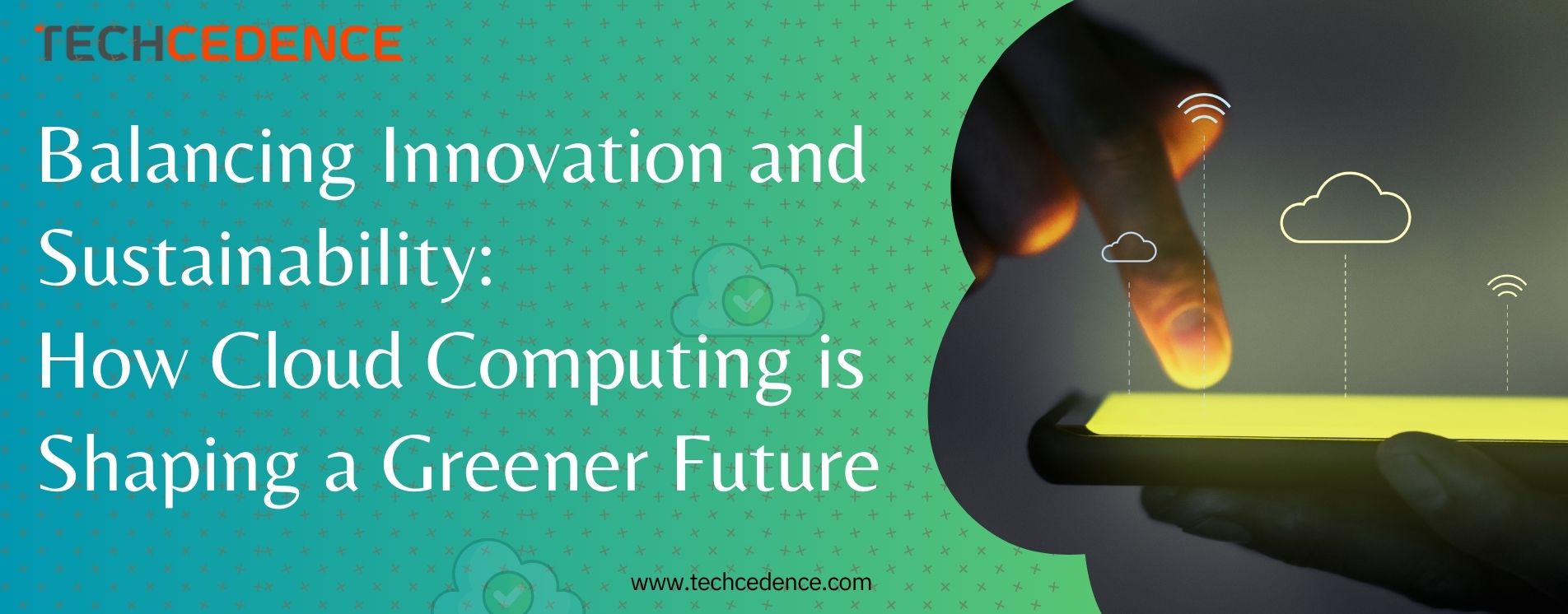
Categories : Uncategorized
Author : Date : Aug 19, 2024
Environmental sustainability is as important as technological progress. The impacts of climate change, resource depletion, and environmental degradation are urgent problems that we must address now, not in the future. Organizations are increasingly expected to embrace digital transformation while also taking responsibility for their environmental impact. This dual challenge can seem overwhelming, but cloud computing provides a solution that addresses both needs. By adopting cloud-based technologies, companies can modernize their operations, becoming more efficient and agile, while also significantly reducing their environmental footprint. Cloud computing helps organizations strike a balance between innovation and sustainability, making it easier for them to achieve their goals without compromising the health of our planet.
The true potential of cloud technology in creating an eco-friendly environment extends far beyond the basic energy-saving benefits that are commonly discussed. Cloud computing represents the fundamental shift in how companies approach IT infrastructure and use its resources. By moving from traditional on-site data centers to cloud-based solutions. This helps organizations in achieving a smoother relationship with technology and its environmental effects.
Cloud service providers use the latest, energy-efficient technologies, cooling systems, and best practices that minimize waste and maximize efficiency. For an individual organization setting up these things is expensive and may lead to higher emissions of carbon and heat.
Cloud computing contributes to environmental sustainability in multiple ways, but its major contribution is its ability to optimize resource allocation on a global scale. It enables real-time adjustments in the resource allocation based on the demand. Computing power, storage, and network needs can be scaled up or down, this level of flexibility and efficiency is not achievable in traditional IT setups.
The environmental benefits of cloud computing extend beyond datacenters by enabling remote work and collaboration, they reduce the need for physical office space and commuting. They also help digitize the processes traditionally done on paper, further reducing resource consumption and waste.
Advancements in cloud technologies open more chances to establish increasingly sustainable environments. The progress of highly efficient data centers reliant on renewable energy and aimed at maximizing energy conservation is pivotal for the future of cloud computing. The evolution will be propelled by breakthroughs in artificial intelligence and machine learning, allowing cloud providers to consistently enhance energy usage and decrease their environmental impact further.
The potential of cloud computing in the future also offers hope for the advancement of more eco-friendly software development methods. With the rise of cloud-native applications, developers will be equipped with the necessary tools and platforms to produce more streamlined, resource-efficient software that reduces computational overhead and energy usage. This transition towards implementing “green coding” practices will play a vital role in lessening the overall environmental influence of the digital economy.
The progress in edge computing, which is an expansion of cloud technology, will enable a greater distribution and localization of data processing. This can lessen the energy needed for transmitting data over extensive distances and enhance response times and dependability. With the increasing prevalence of 5G networks, the combination of cloud and edge computing will create fresh opportunities for energy-efficient, high-performance applications in diverse industries.
Cloud computing has great potential to help the environment, but making it work requires teamwork. Both the companies that provide Cloud Services and the businesses that use them need to put in effort. It’s not enough for businesses to simply use cloud technology – they need to think carefully about how to use it in ways that are good for the environment. This means making sustainability a key part of their planning when they decide to use cloud services, not just something they think about later.
For example, a business might choose a cloud provider that uses renewable energy, or they might design their cloud-based systems to use less energy. They could also use cloud technology to help them track and reduce their overall environmental impact. The key is to actively look for ways to make cloud use as eco-friendly as possible, rather than assuming that just using the cloud will automatically be good for the environment.
Techcedence recognizes the significance of sustainability and is dedicated to offering effective Cloud Services to assist businesses and organizations in attaining their sustainability objectives. Our offerings aim to enhance operational efficiency and minimize environmental impact. Opting for Techcedence allows companies to make a notable contribution to a greener future.
The journey towards a more sustainable future relies on innovation, with cloud computing playing a pivotal role. Prioritizing sustainability from the outset enables businesses to maximize the environmental advantages of cloud computing. This approach not only benefits the planet but also results in cost savings and enhanced efficiency for the business. As technology advances, so do the opportunities to establish genuinely environmentally friendly business environments. The time to act is now, and it is the responsibility of forward-thinking organizations to seize this opportunity and lead the way toward a more sustainable, cloud-powered future.